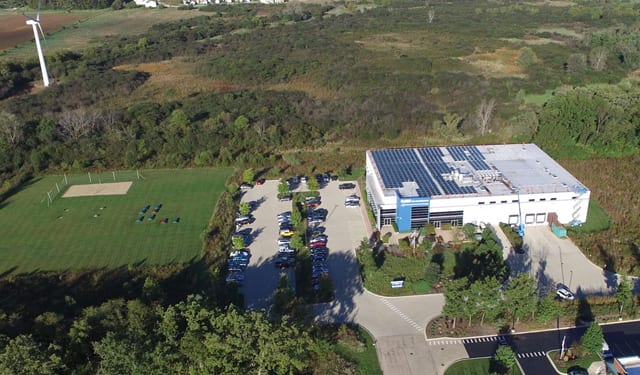 Apple released Final Cut Pro X, Motion 5 and Compressor on Tuesday. If you follow that sort of thing, you’ve probably already seen plenty of reviews and walkthroughs of the new features, new layout and overall performance enhancements of Apple’s “professional” video editing suite.
Apple released Final Cut Pro X, Motion 5 and Compressor on Tuesday. If you follow that sort of thing, you’ve probably already seen plenty of reviews and walkthroughs of the new features, new layout and overall performance enhancements of Apple’s “professional” video editing suite.
The new, lower price point (a total of $400 for all three apps versus about $1000 for Final Cut Studio 4), brings it much closer to the “prosumer” market that was formerly served by Final Cut Express. However, users of Express (as well as those using FCS 4 on older Macs) looking to upgrade may find that their current hardware may not support the new software.
So let’s take a look at the listed requirements for Final Cut Pro X and friends and see where things sit.
Final Cut Pro X $299.99:
- Memory: 2.0GB minimum, 4.0GB recommended
- Graphics: OpenCL-capable graphics card or Intel HD Graphics 3000 or later and 256MB VRAM
- Display: 1280 x 768 resolution or higher
- Disk Space for install: 2.4GB of disk space
Motion 5 $49.99:
- Memory: 2.0GB minimum, 4.0GB recommended
- Graphics: OpenCL-capable graphics card or Intel HD Graphics 3000 or later and 256MB VRAM
- Display: 1280 x 768 resolution or higher
- Disk Space for install: 2.0GB
Compressor $49.99:
- Memory: 2.0GB minimum, 4.0GB recommended
- Graphics: OpenCL-capable graphics card or Intel HD Graphics 3000 or later and 256MB VRAM
- Display: 1280 x 768 resolution or higher
- Disk Space for install: 685MB
Of course, those are just the Apple “recommendations.” Let’s take a look at what you can do to upgrade your Macs to run FCP X the best. This may be old hat for you Final Cut professionals, but those moving up from iMovie or Express, you may need to do some upgrading.
Memory:
Each of Apple’s apps require 2GB and recommend 4GB of memory. Except that those numbers are per application, and most users are going to have multiple apps open at once. Most of the time, it’ll likely be Motion and Final Cut Pro open at the same time (Compressor can always run afterward), so let’s say a minimum of 4GB and recommendation of 8GB. Then you’ll want to account for anything else running on your Mac, too. Yep, apps adds up.
We should also take into account that we’re now dealing with 64-bit apps, which means they can utilize and take advantage of more system memory much better then their predecessors.
Depending on model, MacBooks and MacBook Pros can take up to 16GB, Mac minis can take up to 8GB, iMacs up to 32GB and Mac Pros can hold a up to whopping 96GB. Your best bet is to install the most memory you can reasonably afford, but it wouldn’t be unreasonable to make sure you have a minimum of 8GB for good performance.
Video:
Final Cut, Motion and Compressor all rely on OpenCL or an Intel HD Graphics 3000 chipset to do much of the real-time playback, so you need to make sure that your Mac’s video card can handle it. Apple has published a Knowledge Base article that lists the video cards that are not compatible with the new apps. You may want to check it out to make sure your Mac isn’t on this list.
Unfortunately, if you have an iMac, Mac mini, MacBook or MacBook Pro that’s on this list…well…sorry, but you’re out of luck. Mac Pro owners, however, may be able to upgrade their video card with an OpenCL-compatible card from OWC.
Drive Space
While the Applications themselves seem to only take just over 5GB of space, you should also take into consideration the downloadable content available from Apple with purchase as well as the media you’ll be editing. While you could probably get away with the downloads on your regular drive, you’re definitely going to want a large, fast drive (or a RAID) for editing purposes.
The drive part is easy. OWC sells a wide array of external hard drive solutions. You’ll probably want to get one with a ‘Quad’ interface and an eSATA card for your computer. If eSATA isn’t an option (i.e., if you don’t have a Mac Pro or a MacBook Pro with an Express/32 slot), then you’re looking at FireWire 800, which isn’t quite as fast (though it will probably be enough for smaller projects).
Upgrade now, prevent headaches later.
Video editing is a computer resource-hungry activity. Far too many people try to “get by” with the bare minimum on their systems, only to find that while the system may work, the experience is less-than-optimal. Don’t make the same mistake; make sure your Mac is fully up to the task before jumping into Final Cut Pro X.








Terrific post in addition to great assistance! This write-up is very very helpful and ideal for us. Thanks for expressing valuable facts.